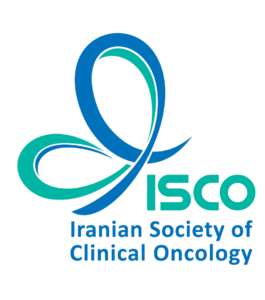Clinical oncology embraces the non-surgical aspect of oncology. It covers both radiotherapy and cytotoxic chemotherapy. Clinical oncology is a major participant in any multi-disciplinary team, which would meet regularly to discuss site specific cases of tumors. Other members would be site specific surgeon, palliative care physician, radiologist, pathologist, specialist nursing staff and appropriate hematologists.
Personal qualities should include:
- Excellent communication skills and a balanced personality often able to cope with tragic clinical circumstances.
- Ability to make sound clinical judgments, especially under significant pressure.
- Tact, diplomacy, ability to delegate, inform and listen.
- A commitment to the specialty indicates very hard work and willingness to be a team member without necessarily always being the leader.
Iranian clinical oncologists are involved in all non-surgical aspects of oncology. In more than 16 centers in Tehran and 28 centers in other cities, they are involved in therapeutic administration of radiotherapy, target therapy, hormone therapy and cytotoxic chemotherapy for solid tumors, and by doing so, play a vital role in prevention and treatment of cancer in Iran.
Clinical oncology is a 4-year specialty program, for which candidates can take a specialty entrance examination only after finishing their 7-year medical school, including an 18-month Internship, and registration as a medical doctor (MD) by the Iranian Medical Council.
Each year, there is an intense competition among doctors to enter the specialty training program. The entrance examination consists of 200 multiple choice questions (MCQs), and candidates with higher marks have the priority to choose their favorite specialty program among several available options.
Residents –under the supervision of consultants- are in direct contact with the patients, and are responsible for the management of admitted patients. They have daily chemotherapy and radiotherapy clinics, as well as regular evening and night shifts.
At the end of each year, residents who meet all department’s criteria are allowed to sit for the annual examination. The decision is made by considering their clinical knowledge, capabilities and skills in managing patients, cooperation with colleagues and the group, and participation in educational activities.
This annual exam includes two parts: a written exam consisting of 150 MCQs, and an OSCE consisting of 8 stations in various fields of clinical oncology. At the end of the year, residents who fail to get the minimum required marks will have to repeat the whole year.
At the end of 4th year of training, residents must sit a final exam, which is similar to their annual exam. Residents who manage to pass the exam, will be eligible to sit the National Board Examination.
National Board Examination consists of two parts: 150 MCQs (part 1); and an objective structured clinical examination (part 2).
Only candidates who manage to pass part 1, do become eligible to sit for part 2 (OSCE).
Questions for the National Internal Board Examination are designed and approved each year by a special board of experts which consists of professors of clinical oncology. The exam is conducted by the Iranian Board of Clinical Oncology, Ministry of Health and Medical Education, and is held every year.
Part 1 consists of 150 multiple choice questions, and part 2 (OSCE) consists of 15 stations.
Each year, only about 30% of the candidates manage to pass the exam. Those who pass the board examination are given a certificate by the Ministry of Health and Medical Education and are acknowledged as Board-Certified Clinical Oncologists, eligible to apply for subspecialty entrance examinations, and consultant positions. After their graduation, clinical oncologists are supposed to participate in continuing medical education programs and achieve specified annual scores to be allowed to continue their practice.
Reading list for National Board Examination
Core texts:
- Medical Ethics (a 2-volume book in Persian)
- DeVita, Hellman, and Rosenberg’s Cancer: Principles and Practice of Oncology. Lippincott Williams & Wilkins (latest edition)
- Perez & Brady’s Principles and Practice of Radiation Oncology. Lippincott Williams & Wilkins (latest edition)
- Radiobiology for the Radiologist by Eric J. Hall. Lippincott Williams & Wilkins (latest edition)
- The Physics of Radiation Therapy by Faiz M. Khan. Lippincott Williams & Wilkins (latest edition)
Additional reading:
- NCCN guidelines (latest version)
- ESMO guidelines (latest version)
- Journal of Clinical Oncology (JCO). Only phase III trials and systematic reviews of the last two years.
- Annals of Oncology. Only phase III trials and systematic reviews of the last two years.
| Pioneers of clinical oncology in Iran | |
| Prof Seyed Hossein Mortazavi | Prof Kamal ad-Din Dehshiri |
